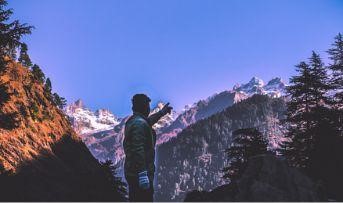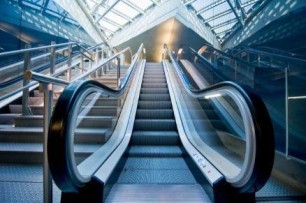General Insurance Blogs, Articles & Updates by - Magma HDI
Have us call you
- RENEW YOUR POLICY
- BUY NEW POLICY

Best winter destinations in India to plan bike trips with friends
As winter marks its arrival in India, planning trips with your friends becomes exceedingly essential. India is a country with diverse landscapes, sceneries, and cultures. This makes it exciting for bike trips, and there can be no better season than winter to explore. Bike trips give travellers a chance to discover the unknown.
The lush green surroundings, mountain passes, or scenic landscapes are perfect for exploring via bike. These trips become fun and safe if you've good company and reliable bike insurance.
Can you imagine where to set off this winter? Here's a list of the best biking destinations in India during winter to get you started.
1. Guwahati to Tawang:
Renowned as one of the most beautiful biking tours in the northeast, the Guwahati to Tawang route is a thrill in itself. The route is stretched over 500 km and becomes all the more scenic during winter for biking. Tawang is famous for its Buddhist monasteries and distinctive culture. On the other hand, Guwahati is beautifully cuddled between the Shillong Plateau and the Brahmaputra River.
The surroundings are breathtaking, with mesmerising valley views. The lush green landscapes of Tawang form a beautiful yet intricate contrast with snow-covered mountains encompassing the biking route.
2. Mumbai to Goa:
Goa always tops the winter bucket list of travellers and adventure junkies to explore its vibrancy, especially during the famous Goa Carnival and Christmas. And there can be no better way to travel to Goa than a bike trip with friends. The route through the Western Ghats and the scenic roads of the Malvan region is a delight to experience.
The gentle wind softly kissing the cheeks and mesmerising views taking your breath away are some common experiences you will enjoy on your trip to Goa. The distance from Mumbai to Goa is nearly 590 km, and it may take around 12-14 hours to reach there. If you love nature and beaches, this biking trip in winter will touch your heart and soul.
3. Bengaluru to Kolli hills:
The panoramic hill station will take your breath away while moving from the Western to Eastern ghats. The road from Bengaluru to KolliMalai is both adventurous and heartwarming, with around 70 continuous hairpin bends and the serene sight of the Agaya Gangai waterfalls and historic temples on the way. The distance from Kolli hills to Bengaluru is roughly 287 km, and the journey is worth experiencing.
4. Jaipur to Jaisalmer:
A bike trip to Rajasthan during winter can be a good exploration. The weather is favourable for the bikers to drive continuously for hours without any fatigue. One such route to explore in Rajasthan is from Jaipur to Jaisalmer. From the heart of the Pink City to the charm of the Golden City, this bike ride offers various offbeat experiences that are one-of-a-kind.
The distance is roughly 558 km, and the time taken is around 11 hours. From surpassing beautiful local villages, expansive desert views, and long roads to discovering the colourful Rajasthani culture along the way, this bike journey should be on your wishlist for winter travel.
There are myriad options to consider if you want to take a biking trip during winter in India. These trips become all the more fun when you are in the company of your friends. With India's diverse landscapes, you will surely have the best time of your life.
You must take the journey only if you are an expert driver, as these roads can be tricky. Additionally, you should also have bike insurance so that you have it all covered even if things go wrong. Ensure that your bike is serviced thoroughly before setting off on your trip. The bike’s performance gets impacted, and the mechanical parts jam in extreme winter conditions. Regularly check your bike’s condition during your trip to ensure its smooth working. Also, invest in good quality safety gear and helmet to stay safe while touring rugged terrains. Lastly, enjoy every bit of the journey and conquer new milestones.
Click HERE to buy bike insurance before planning your next winter trip.
Disclaimer: The information provided above is for illustrative purposes only. To get more details, please refer to policy wordings and prospectus before purchasing a policy.

Follow these tips for a safe escalator ride
How often are we stuck behind people scared to use the escalators, or are we the ones scared of escalators? Getting on the escalator can be daunting the first few times, but once you get the hang of it, it is easy and a more convenient way to traverse different floors. If you are worried about escalator safety, this article is just for you.
We will talk about everything you need to take care of around an escalator to make it easier and safer for you. Before understanding the safety measures, let’s examine some key points concerning an escalator.
How does an escalator work?
A set of interlocking steps looped around a pair of gears is made to rotate so that each step oscillates between different building levels.
What are the different parts of an escalator?
Inlet guards: A protective guard made of rubber that fits on the handrail to avoid fingers or other parts from getting caught in the handrail opening.
Operating panel: Switches that operate the functionalities of an escalator located near the boarding and landing parts of the escalator.
Sprocket: The wheels installed at the lower and upper parts attached to the steps are known as sprockets.
Truss: The support system of the entire escalator is known as a truss.
Balustrade: The part of the escalator that goes beyond the steps, including the guards, panels, handrails, and the deck board, is known as the balustrade.
What are the common escalator hazards?
1. Contacting the moving parts:
It is imperative to ensure that all the mechanical parts are adequately covered and are inaccessible to people. Little children tend to touch or hold the moving parts, crush their fingers, or scrape the surface altogether. Remember to hold on to the railings lined with the rubber casing and leave the railing as soon as you reach the standing deck on the escalator.
Don’t use phones or being distracted while on the escalator to avoid accidents. If you are with kids, be mindful and tell them beforehand about the dangers of touching the different moving parts of the escalator. Before getting on to the escalator, check that your shoe strings are tied properly to avoid getting caught between the steps.
2. Collision:
Leave a gap of at least one step between yourself and others on the escalator. Sometimes, people can take longer to get on or off the escalator, raising the chances of a collision. Never place your shopping bags on the stairs ahead or behind you.
This can create confusion and lead to a crash. If you have a lot of bags, it is best to keep them on the same level as yours so you can easily remove the bags off the escalator before getting down.
3. Step carefully:
Before stepping onto the escalator, ensure it is moving in the same direction you want. Step carefully onto the moving band. One key rule to remember is to avoid standing in lines on the escalator. These lines separate into different steps as you move forward and might lead you to topple over to the back.
These are a few things that you need to keep in mind before boarding an escalator. If you are with kids or older adults, hold their hands so that they can keep their balance. If you see elderly people trying to get onto the escalator, offer a helping hand. Escalator accidents are familiar sights in crowded areas but being mindful of your surroundings will keep you safe.
All that said, these situations can be completely unpredictable, and it is best to safeguard yourself in these circumstances with the best personal accident insurance policy in India. Personal accident insurance is the safety net you deserve to help yourself and your loved ones cover the costs of any accidents.
Click HERE to buy the best personal accident insurance policy in India.
Disclaimer: The information provided above is for illustrative purposes only. To get more details, please refer to policy wordings and prospectus before purchasing a policy.

Here's what you should know about the insurance while scheduling a surgery
Health insurance in India covers the costs of hospitalisation, medicines, and doctor consultation fees that can arise from any illness, disease, or accident. It has become more of a necessity because of our eating habits, the lifestyle we lead, and the risks of accidents. Such insurance removes the sudden financial burden you may face due to an accident or the need for expensive surgery.
However, not all is good, even if we have insurance coverage. Here's what you should know about insurance while scheduling surgery.
1. Coverage and limit:
The cost of surgery depends on its type and complexity. While a knee-replacement surgery will cost us around 1.5-2 lakh rupees in India, a more complex surgery such as a bypass surgery can cost upwards of 5 lakh rupees. You should first consider the total insurance coverage you have, keeping in mind the type of surgery you plan to undergo.
Your insurance policy will only cover the policy amount insured. You will have to bear any additional cost incurred in the surgery over the limit prescribed by your policy. Hence, you should be financially ready and arrange the funds accordingly.
2. Waiting period:
Any insurer does not provide cover from the first day your policy starts. The insurance company prescribes a waiting period, after which they will start providing you with the coverage benefits. This waiting period is not specified by any government agency. It depends on the individual company and the illness.
For example, the waiting period for any surgery arising can range from 1-2 years. The waiting period can be as high as four years if you declare a serious pre-existing disease when purchasing the policy. The insurance company will not reimburse you for any surgery scheduled during the waiting period.
3. Surgery insurance plan:
Insurance companies nowadays provide specific "surgery insurance plans," too. You can buy such a plan in case you intend to schedule surgery in the near future. However, you should first check the list of surgeries that your policy will cover.
Next, make sure your sum insured is adequate to cover all the costs related to the surgery. This includes the cost of surgery, hospitalisation, medicines, doctor fees, etc. You should also confirm the waiting period and the exclusions under your policy and assure yourself that your surgery will be covered under it.
4. Cashless claim:
A cashless hospitalisation facility settles your hospital bill without having to pay any cash at the time of discharge. Insurance companies tie up with hospitals and directly settle your bill with the concerned hospital.
Whenever you plan to schedule surgery, make sure the hospital you choose is one of the network hospitals of the insurance company. You can enjoy a cashless treatment facility there. You will not have to worry about paying the hefty bills and getting them reimbursed by your insurance service provider later.
Health insurance in India is extremely helpful when planning a necessary and expensive surgery. It removes the stress of arranging immediate finance for the surgery when you are already reeling under the stress of getting it done.
You should always go for the best health insurance in India available in the market. Its terms and conditions regarding the coverage and payout must be clear. The insurance policy should act like your saviour in difficult times. It should not be an additional burden on you when filing the claim during surgery is delayed or difficult. Also, it should be economical to fade away your financial stress.
Click HERE to buy the best health insurance in India policy to keep you and your family safe from health adversities.
Disclaimer: The information provided above is for illustrative purposes only. To get more details, please refer to policy wordings and prospectus before purchasing a policy.

Are you a flashpacker? Follow these tips to make your flashpacking trips memorable
India is a diverse nation with many beautiful surroundings, sceneries, and landscapes. Due to this spellbinding canvas of experiences, it has a flourishing tourism industry to make every occasion come alive. People from far and wide visit India to witness its monuments, lakes, forts, palaces, mountains, valleys, and cultural bliss.
Many terms are going the rounds for Gen Zs and Millennials who have a zest for travelling in and around India. The words like backpacking and flashpacking are thrown around like confetti. But what exactly do they mean? More and more travellers are turning towards flashpacking with time. If you're also one of them, this article is for you.
Amidst all this, you must have personal accident insurance India to help you stay secure and safe when you travel to explore new destinations and discover rare experiences.
What is flashpacking?
Flashpacking is one of the most travel-related terms in fashion and making the news right now. You may be familiar with backpacking which deals with travelling to far and wide places on a budget. It is usually done solo to explore more areas of the country. Backpackers mostly stay at hostels and enjoy the local street food. Everything is done keeping a tight budget in mind.
On the other hand, flashpacking is described as backpacking on a better budget. It refers to solo or independent travellers with more money to spare on their travels. Unlike backpackers, this expenditure is spent on the best food chains and boutique hotels. They want to explore every nook and corner of the country with added luxury and comfort.
What are the pros of flashpacking in India?
There are a variety of advantages of flashpacking in India. Since you will not have a tight budget to adhere to, you can enjoy it to the fullest. Some of the widely known advantages are:
● You can stay at the best, most comfortable, and luxurious hotels that offer magnificent views. For instance, if you're in Udaipur, you can book a hotel overlooking Lake Pichola.
● You will get a peaceful sleep in your comfortable bed. You will not share a room or stay in the dormitory, which can disrupt your sleep and cause other distractions while you try to enjoy your solitude.
● Since you'll be exploring the best food joints in the place, you'll never sleep on an empty stomach. Further, the options are deemed to be delicious as there is no shortage of funds.
● You can also travel comfortably in cabs or motorbikes without having to hitchhike or wait for your next ride.
Tips to make flashpacking trips memorable:
There are many tips and tricks that you can consider while flashpacking as an independent tourist in India. These are:
● Make sure you research and plan before embarking on your flashpacking trip to India. You can consult a travel agent or company that has enough resources for the same.
● Book your flight or train tickets in advance to avoid problems later.
● Do not force too many places in a single day. With no budget limitation, you can prolong your trip as long as you want without any worries.
● Ensure that you have enough information about the entry time, fees, and mode of travel for a particular place you want to go to.
● Carry all the essentials like medications, sunscreen, masks, sanitiser, snacks, and so on.
● Book the best hotels with a view well in advance, so you do not have to worry about having a luxurious stay.
● Choose the best and most well-researched places to stay in the city.
You should consider many things before you plan a flashpacking trip in India. You should take all the necessary precautions and also have personal accident insurance India to cover the medical expenses in case of emergency. India welcomes several once-in-a-lifetime experiences and moments you can cherish by setting out on tours to the country's diverse retreats.
Click HERE to buy personal accident insurance India.
Disclaimer: The information provided above is for illustrative purposes only. To get more details, please refer to policy wordings and prospectus before purchasing a policy.


